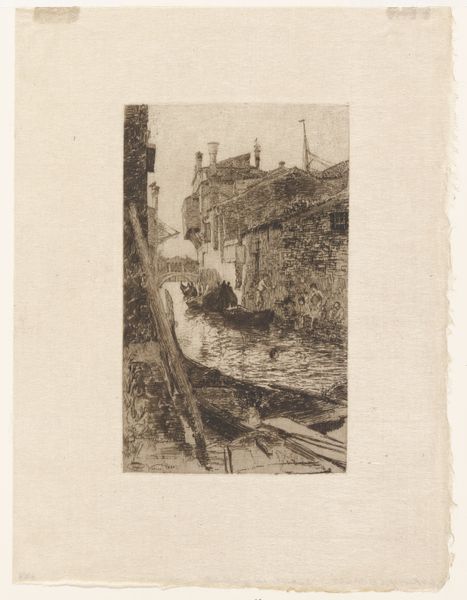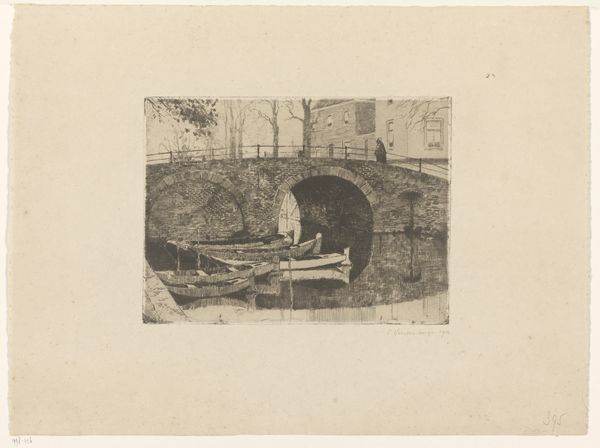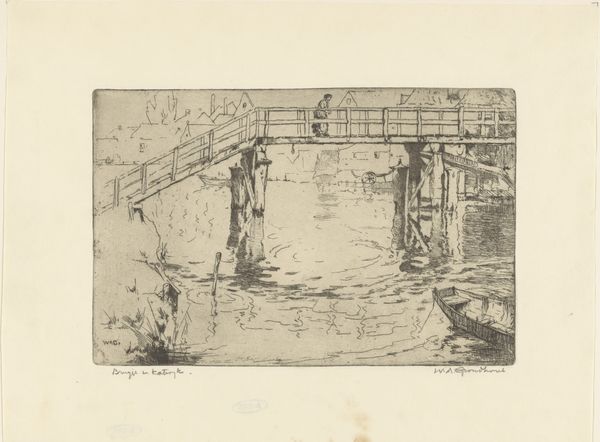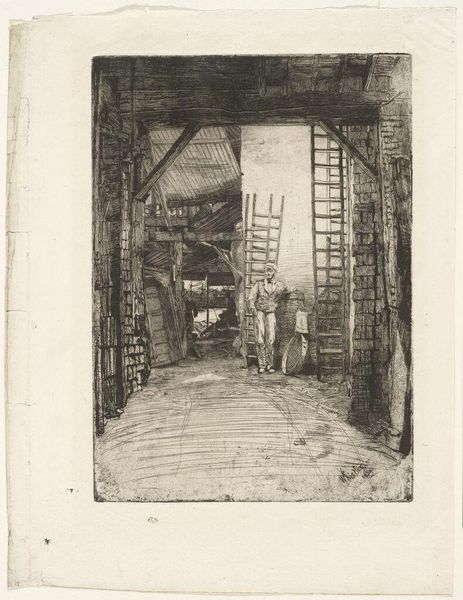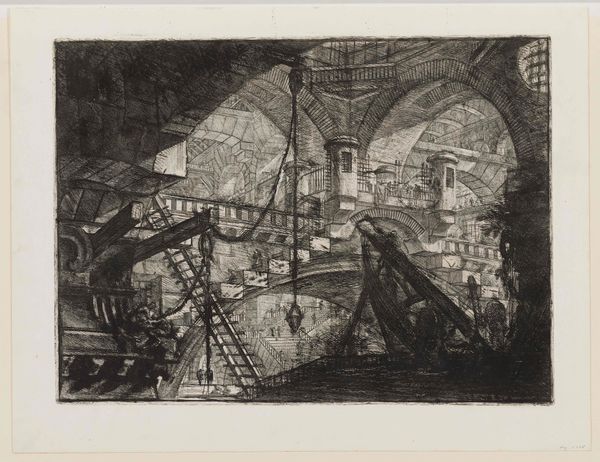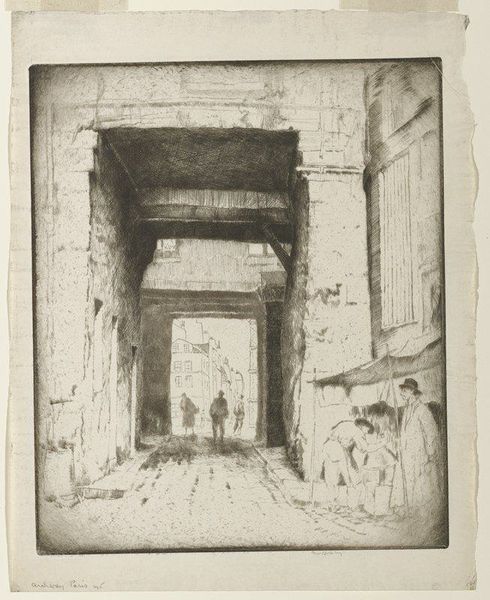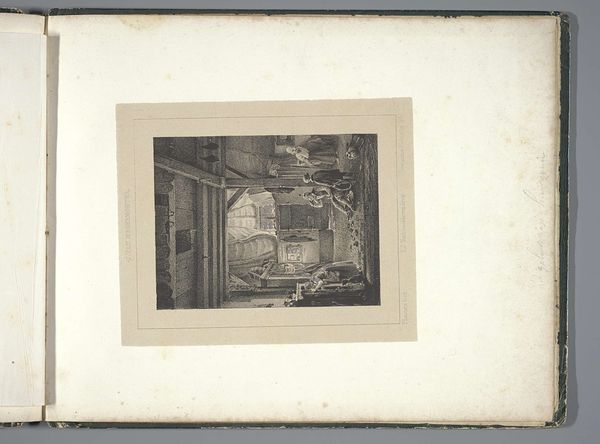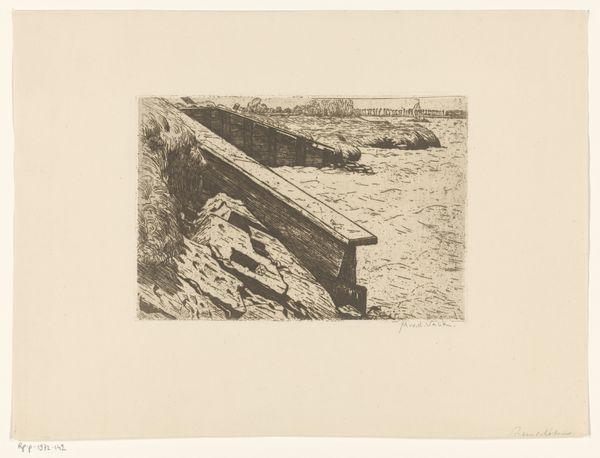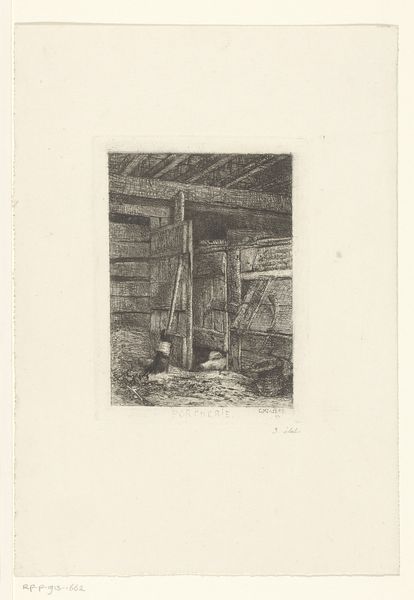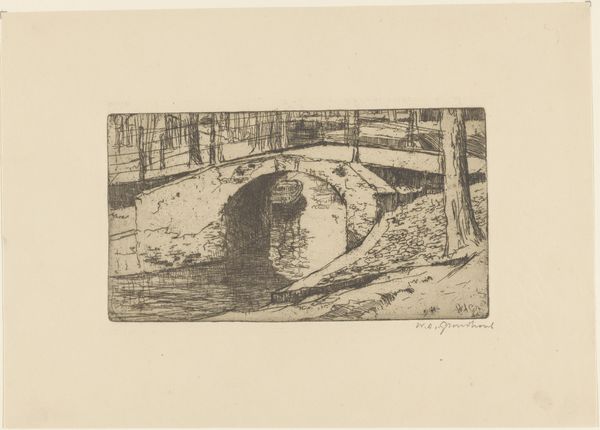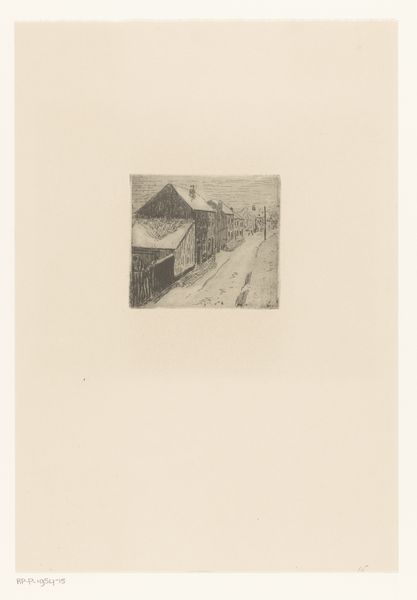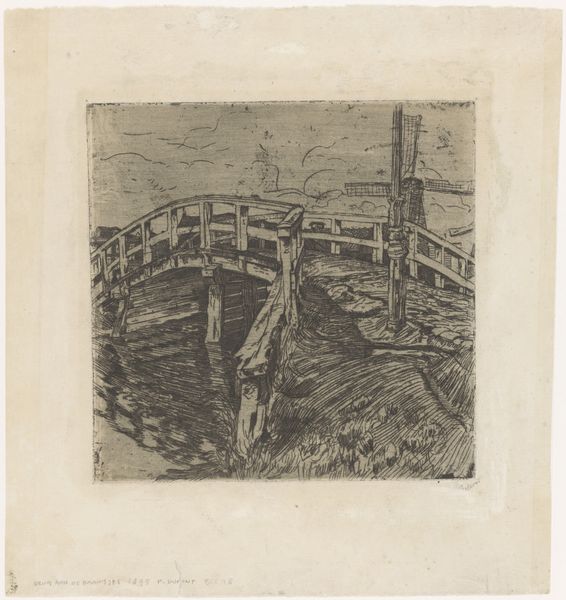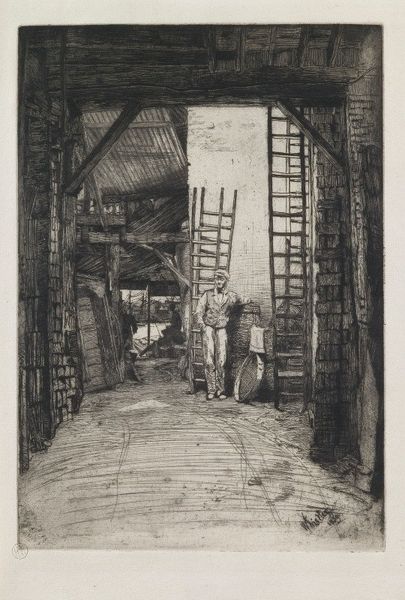
print, etching
# print
#
etching
#
etching
#
cityscape
#
realism
Dimensions: 6 1/16 × 6 1/8 in. (15.4 × 15.56 cm) (plate)9 × 7 1/8 in. (22.86 × 18.1 cm) (sheet)
Copyright: No Copyright - United States
Curator: Let's discuss "Un pont boulevard Ney," a 1913 etching by Charles Heyman currently residing at the Minneapolis Institute of Art. My initial impression is somber; it has this beautiful network of urban structures rendered with such starkness and intricate detail, almost ghostly. Editor: Ah, a tangible cityscape conjured from thin air, almost oppressive in its geometric starkness and seemingly romantic gaze upon an evolving urban landscape, perfect example of modernity's discontents realized with material skill. One could say Heyman meticulously recorded not just what was there but how industrial encroachment felt. Curator: Precisely. The etching technique is key; the fine lines create a dense network, reflecting the subject matter. There's a palpable sense of the artist carefully working with the metal plate to reproduce this vision, but also the conditions and demands placed upon labor itself in capturing this urban view. It suggests more than meets the casual eye. Editor: And, tell me, where is it that this etching moves you beyond its materials? To me it evokes this peculiar feeling – a melancholy longing. Despite the harsh angularity, the subdued tonality softens the impact; as if trying to find beauty amid industry and chaos. It certainly captures a Parisian sentiment; fleeting and pensive while the city shifts forever around you. Curator: Indeed. You see in this the negotiation between industry and artistry—how social life seeps into creative expression within very particular spaces! Editor: Exactly, and considering that the cityscape has held relevance across ages for people, maybe this offers us something far simpler to reflect: we can create even through industrial materials a personal narrative for what’s considered, by some, to be ugly and uninspiring, making it meaningful and touching. Curator: Fascinating perspectives; perhaps there's an optimism lingering in the very act of artistic transcription amid shifting spaces? Editor: Or maybe it’s just etching reality and ourselves upon the blank plates of potential…until the plates inevitably wear and the edition comes to its end.
Comments
No comments
Be the first to comment and join the conversation on the ultimate creative platform.
